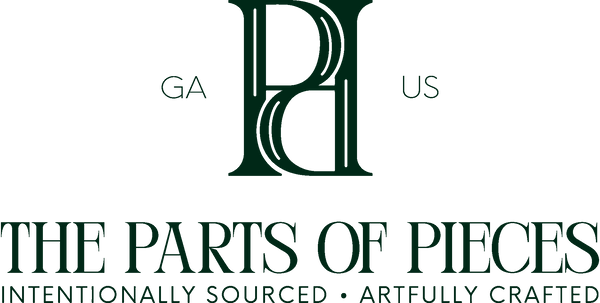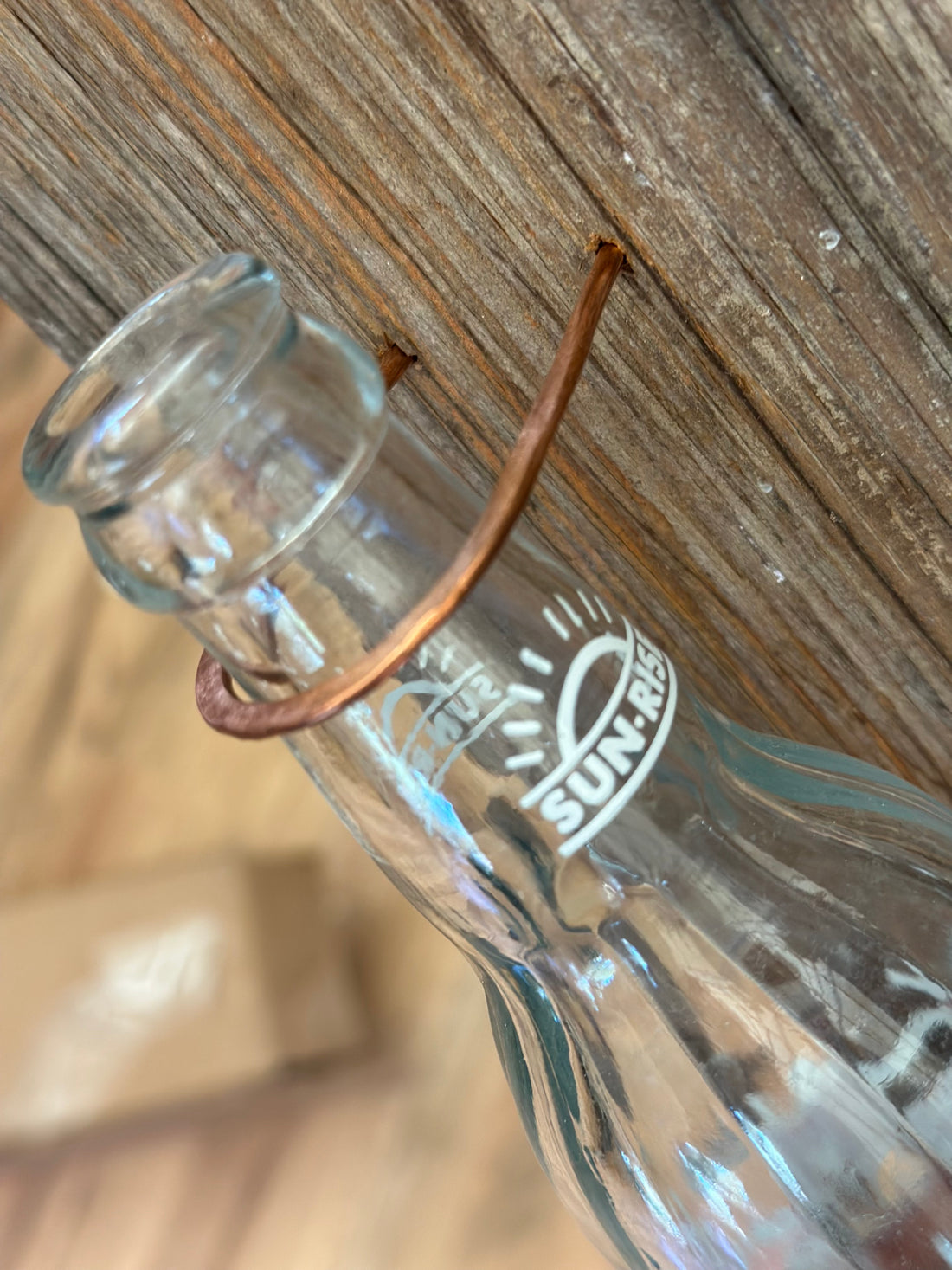Some collectors can't resist the allure of hunting down glass bottles at flea markets or the dusty corners of antique shops. Each bottle, with its unique color and shape, is a tangible connection to history. In our home, they are scattered around, either mingled with decor, catching light in the windows or filled with water propagating plants. Last summer, we found a gentleman with a huge collection of bottles that had been with him for years. We were able to pick them up from his farm in Stephens, Georgia.
We set out to design a new function for our found treasure. The bottles were placed in combination with a reclaimed board from a mid 1800’s barn in Adams County, Ohio. The Ohio Barnwood Wall Vases were the result. I wanted to research some of the bottles we had gotten and have discovered more than I set out to learn. In our Message in a Bottle Series we will cover the history of glass and all the many fascinating intricacies of vintage glass bottles.
The unearthing of the oldest known glass bottle offers a fascinating glimpse into the early history of glassmaking. Discovered during archaeological excavations in 1925 at the ancient Mesopotamian city of Uruk. It is thought to be one of the first cities in history and is located 150 miles to the south of present-day Baghdad, the capital of Iraq. This city holds significance on many fronts, as evidenced by the discovery of thousands of clay tablets dating back to the origins of writing approximately 5000 years ago.
This particular artifact sheds light on the art of glass production around 3,700 BC. Standing at less than 5 inches tall, the bottle displays thick and uneven walls, indicative of a free-blown creation. Traces of wine residue confirm that this small vessel was a functional piece in the early times.
After archeologists studied the bottle, it was determined that there were high levels of silica, lime, and alkali present. Silica (often sourced from sand), soda ash (an alkali), and limestone (providing lime) are fundamental components of the basic recipe for making one of the most common types of glass, soda-lime glass. This recipe continues to be the primary component for various glass products, including bottles, windows, and glassware.
If there is one thing that always rings true is that change is the only constant. It is exciting to know that humankind has maintained a similar process for glassmaking over 5000 years. Vintage bottles are a long way from Ancient Mesopatamia. In our next installment we will begin to wind our way from 3700 B.C. to the famous contoured Coke bottle.

